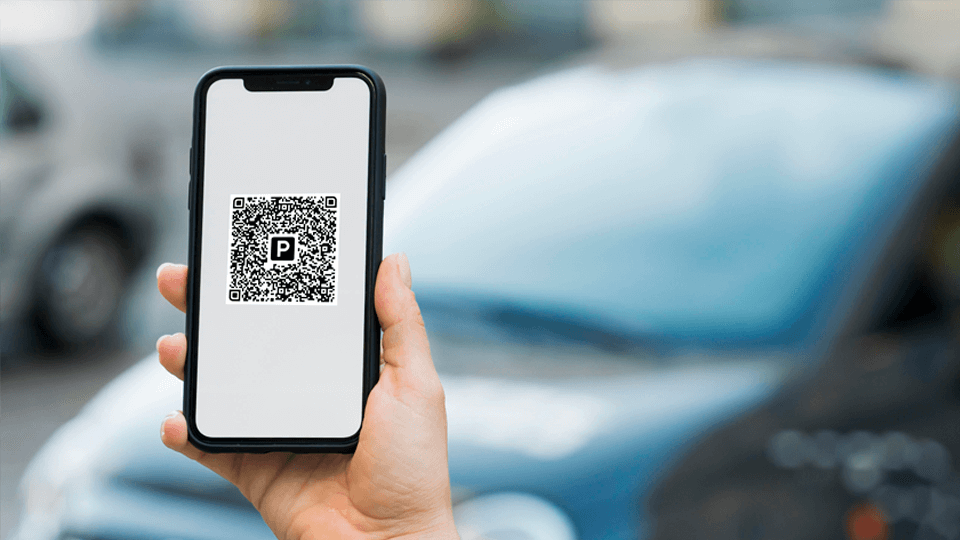Parking Perspectives: Squaring Away Uncertainties About QR Code Technology in Parking Management with T2 Systems

The use of QR codes in parking has surged in recent years, driven by the demand for more efficient and contactless solutions. These codes are now commonplace in parking garages, lots, and on-street parking, offering a convenient way for your customers to pay and access services from their smartphones.
As QR codes become an integral part of parking infrastructure, it is essential to consider your customers’ safety and security. Ensuring secure transactions and protecting against potential security vulnerabilities — such as QR code tampering and phishing scams — are critical to maintaining your reputation, trust, and the overall effectiveness of this technology.
Background
QR codes, or Quick Response codes, represent two-dimensional barcodes scannable by smartphones or barcode scanners, offering advantages such as increased data storage, resilience to damage, and rapid data transmission. Originally devised by a Japanese automobile manufacturing company in 1994, QR codes have experienced heightened usage, particularly during the pandemic, becoming integral to business operations while adhering to social distancing guidelines. Most consumers have seen and used QR codes whether it be for viewing a food menu, ordering food, or paying for parking.
The exponential growth in QR code utilization is evidenced by studies projecting 99.5 million users in the United States engaging in QR code scanning by 2025. This trend, fueled by the perceived permanence of QR code integration into phone usage, underscores the need for heightened security awareness.
Security Risks
In contemporary cyber threats, QR code phishing has emerged as a sophisticated tactic employed by malicious actors. This deceptive technique involves the creation of fraudulent QR codes leading to malicious websites designed to compromise sensitive information.
Dynamic and static QR codes represent two primary variations, differing in their ability to modify encoded information. Static QR codes retain unchangeable data, commonly used for tasks like sharing website addresses or contact information. Conversely, dynamic QR codes offer flexibility, allowing for data updates without altering the code’s appearance, making them ideal for dynamic content needs.
Despite their benefits, QR codes are vulnerable to exploitation, exemplified by real-life instances of QR phishing. Cybercriminals employ sophisticated social engineering tactics, such as attaching fake QR code stickers to pay-to-park kiosks or distributing counterfeit parking tickets with QR codes. In these scenarios, unsuspecting individuals inadvertently share sensitive information, illustrating the potential consequences of QR phishing.
Tips & Tricks to Mitigate Risk
To mitigate the risks associated with QR code phishing, businesses must adopt a proactive stance. Education emerges as a foundational strategy, addressing the prevalent role of human error in data breaches. Cybersecurity training becomes indispensable in enhancing employee vigilance, emphasizing the scrutiny required when interacting with QR codes. Additionally, the implementation of two-factor authentication (2FA) serves as an effective defense, requiring users to provide secondary verification, impeding unauthorized access attempts.
In conclusion, the convenience of QR codes should not overshadow the inherent risks of phishing attacks. Businesses must prioritize proactive measures, including robust education initiatives and the implementation of security measures like 2FA, to safeguard against the evolving threat landscape. These efforts ensure the continued security of operations and data, fortifying organizations against the perils of QR code phishing attacks.
About T2 Systems 
T2 is the largest provider of parking and mobility solutions in North America. With over 27 years in business, T2 now serves more than 2,000 customers and maintains the largest Customer Community with over 7,500 active members. T2 helps universities, municipalities, operators, healthcare campuses, and transportation hubs generate revenue and operate efficiently with a comprehensive, integrated suite of solutions featuring touchless and contactless capabilities. From curbside management to gateless, from mobile payments to transportation demand management, T2 strives to make every trip a smooth journey by streamlining the parking, mobility, and transportation experience with technology solutions that help organizations manage resources, achieve goals, and empower consumers with choices.







Comments
There are no comments yet for this item
Join the discussion